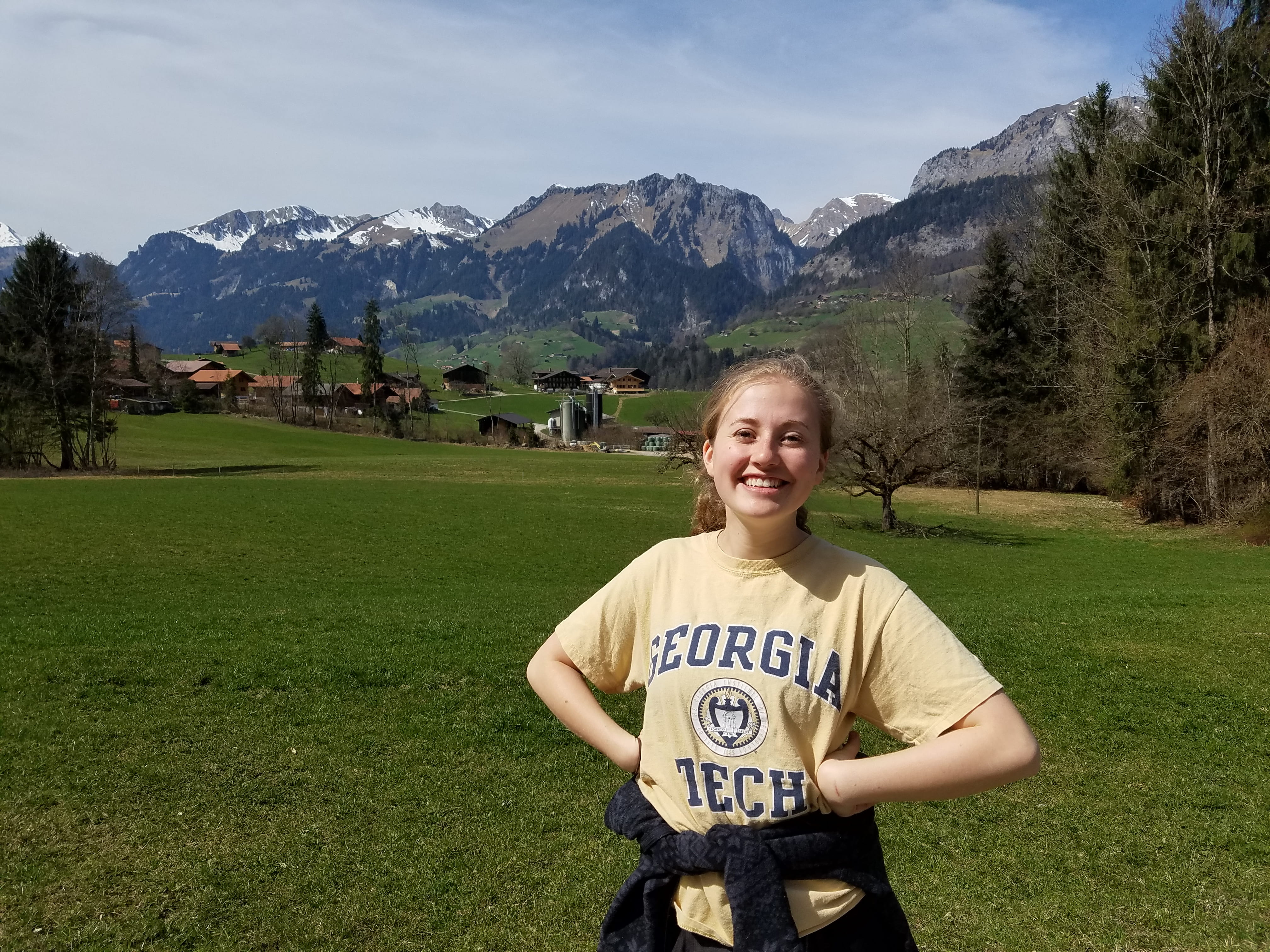This weekend I got to see my family again! The weekend kicked off in Riquewihr, a small town in France dating back to the 1500s, known for its beautiful vineyards and amazing architecture. Every house looked like a gingerbread house, the cobblestone streets were winding and sloping, and the roofs were topped with old tile or thatch. We spent the day walking through the town, hiking through the vineyards and sampling local foods. I even had frog legs!

As we walked through the town, we couldn’t help but notice that there were witches hanging in every doorway. These wooden or porcelain doll witches ranged from scary to cute, and dark to colorful. We walked through the streets puzzled, until we found a shop that sold witches exclusively. After talking to the clerk, we learned the reason. Legend has it that a young widow was banished from the town for being a witch. As she gathered her things and left, she spotted enemy soldiers approaching the town. She ran back as fast as she could to warn everyone, and the town was able to protect itself from attack. As a result, hanging a witch by the door or the window as a lookout will bring good luck and help you keep your enemies out.
The next day we hopped in our rental car and began driving north. Destination: Brussels. We stopped in Strasbourg for lunch, eating in the old city and admiring the tudor-style houses. Next, we forged on to Metz so my family could see where I am going to school and spending my weekdays. I showed them the cathedral and my dorm. Late that night, after a great deal of rain and traffic, we arrived in Brussels.

My mother and sisters flew back to the USA the next morning. My dad had business in London and would stay with me another day. After dropping them at the airport, we decided to take a quick train ride over to Bruges, an economic capital of Europe where luxury goods were traded and crafted. Famous for its tapestries and lace, this old city gives off an air of luxury. All of the facades of the houses were carved in amazing detail, and many roofs and windows were gilded. After a nice lunch of traditional stew, and a waffle for dessert we browsed the lace and tapestry shops. It is amazing how intricate these two thread-based art forms are; many pieces can take years to complete. We returned to Brussels that night and went to sleep.

The last day, we woke up early for a nice breakfast. We then decided to take a long walk through the city to see the Sablon district, famous for its antiques and old books. We then made our way over to the European Parliament and the Victory arch. After a brisk morning of walking and photo taking, we returned to the Grand Place, the big square surrounded by old fancy buildings. After a bit of sightseeing, we had to part ways.
All in all, it was a lovely weekend.

 facility was quite vast. Built up the side of the hill boasting a beginner slope, intermediate slope and terrain park, two ski lifts and a friendly staff, it was crazy to imagine that all of this fit inside a warehouse. The beginners headed to the bunny slope and the old timers headed toward the intermediate.
facility was quite vast. Built up the side of the hill boasting a beginner slope, intermediate slope and terrain park, two ski lifts and a friendly staff, it was crazy to imagine that all of this fit inside a warehouse. The beginners headed to the bunny slope and the old timers headed toward the intermediate. My favorite experience was watching the beginners try the intermediate hill for the first time. Their friends went right behind them to make sure they were all right. Teeth bared and leaning forward they traveled slowly down. Their faces full of determination, and pride at what they had accomplished. I think everyone shared in the excitement of these newbies learning a new skill. It was also really awesome to see some members trying out the terrain park, going over massive jumps and grinding on rails.
My favorite experience was watching the beginners try the intermediate hill for the first time. Their friends went right behind them to make sure they were all right. Teeth bared and leaning forward they traveled slowly down. Their faces full of determination, and pride at what they had accomplished. I think everyone shared in the excitement of these newbies learning a new skill. It was also really awesome to see some members trying out the terrain park, going over massive jumps and grinding on rails.









 inviting, and more along the lines of a Great Clips or something like that. Not being particularly picky about my hair, and the fact that it was cheaper didn’t hurt, I stepped into Diagonal Coiffure.
inviting, and more along the lines of a Great Clips or something like that. Not being particularly picky about my hair, and the fact that it was cheaper didn’t hurt, I stepped into Diagonal Coiffure.








